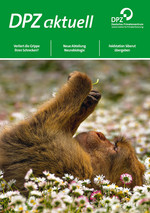New influenza therapies
The annual influenza epidemics during the winter season pose a substantial health threat, particularly to infants, immunosuppressed individuals and the elderly. Moreover, intermittent pandemics caused by influenza viruses unknown to the immunologic memory of the population may have dramatic consequences. It is believed that up to 50 million patients died from influenza pandemic in the year 1918 (Spanish flu). The ever changing nature of influenza viruses makes the establishment of countermeasures a challenging task. Therapeutics may cease to be effective when the viruses acquire resistance mutations. Moreover, vaccines against influenza epidemics need to be constantly adjusted to the circulating viruses and may have little or no effect against novel pandemic viruses. Therefore, it is imperative to devise novel strategies for antiviral intervention.
Currently available influenza therapeutics target viral proteins. However, a new concept for antiviral therapy postulates that host cell proteins essential for viral spread but dispensable for cellular survival might be better targets. Thus, the genetic information of the host is stable and will not change during therapy. As consequence, therapy might not be compromised by resistance development. The researchers of the Infection Biology Unit could show that the cellular serine protease TMPRSS2 is required for production of infectious influenza A viruses (IAV). Moreover, they obtained evidence that other viruses also depend on TMPRSS2 for spread while the proteins is dispensable for normal development and homeostasis of the host. TMPRSS2 thus constitutes an attractive target for antiviral intervention. Prof. Stefan Pöhlmann and coworkers investigate how TMPRSS2 activity and be blocked with high specificity and whether TMPRSS2 inhibitors can prevent influenza. For this, a non-human primate model for severe influenza will be established once the BLS3 animal facilities at DPZ are functional.
As a byproduct of IAV genome replication, genomic RNAs can be generated that contain large deletions. These defective RNAs may inhibit replication of wt genomic RNAs and can be packaged into virions, resulting in the production of defective interfering particles (DIPs). Coinfection of cells with IAV and DIPs results in suppression of IAV spread, suggesting that DIP may hold promise as antiviral agents. The goal of the research of Prof. Stefan Pöhlmann is the establishment of cell culture systems that allow production of DIPs in the absence of infectious virus. Moreover, the researchers are investigating how the antiviral activity of DIPs can be increased. In addition, DIPs encoding marker proteins are generated that allow determining the kinetics of DIP spread. Finally, the most interesting DIPs will be tested in animal models. These studies are conducted within a consortium led by Prof. Udo Reichl, Max-Planck-Institute for the dynamics of complex technical systems, Magdeburg.
Selected publications
Zmora P., M. Hoffmann, H. Kollmus, A.S. Moldenhauer, O. Danov, A. Braun, M. Winkler, K. Schughart and S. Pöhlmann. TMPRSS11A activates the influenza A virus hemagglutinin and the MERS coronavirus spike protein and is insensitive against blockade by HAI-1. J Biol Chem. 2018 Sep 7;293(36):13863-13873.
Zmora P., P. Molau-Blazejewska, S. Bertram, K. Walendy-Gnirß, I. Nehlmeier, A. Hartleib, AS. Moldenhauer, S. Konzok, S. Dehmel, K. Sewald, C. Brinkmann, C. Curths, S. Knauf, J. Gruber, K. Mätz-Rensing, F. Dahlmann, A. Braun and S. Pöhlmann. Non-human primate orthologues of TMPRSS2 cleave and activate the influenza virus hemagglutinin. PLoS One 2017 11;12(5).
Kühn N., S. Bergmann, N. Kösterke, R.L. Lambertz, A. Keppner, J.M. van den Brand, S. Pöhlmann, S. Weiß, E. Hummler, B. Hatesuer and K. Schughart. The Proteolytic Activation of (H3N2) Influenza A Virus Hemagglutinin Is Facilitated by Different Type II Transmembrane Serine Proteases. J. Virol. 2016 90(9):4298-307.
Zhou Y., P. Vedantham, K. Lu, J. Agudelo, R. Carrion Jr., J.W. Nunneley, D. Barnard, S. Pöhlmann, J.H. McKerrow, A.R. Renslo and G. Simmons G. Protease inhibitors targeting coronavirus and filovirus entry. Antiviral Res. 2015 Apr;116:76-84.
Zmora P., P. Blazejewska, A.S. Moldenhauer, K. Welsch, I. Nehlmeier, Q. Wu, H. Schneider, S. Pöhlmann and S. Bertram. DESC1 and MSPL activate influenza A viruses and emerging coronaviruses for host cell entry. J. Virol. 2014 88(20):12087-97.
Hatesuer B., S. Bertram, N. Mehnert, M.M. Bahgat, P.S. Nelson, S. Pöhlmann and K. Schughart. Tmprss2 is essential for influenza H1N1 virus pathogenesis in mice. PLoS Pathog. 2013 Dec;9(12):e1003774.

Prof. Dr. Stefan Pöhlmann Head of working group +49 551 3851-150 +49 551 3851-184 Contact
Additional information
More information on the research of the working group "New Influenza Therapies" can be found in the following issues of the magazine "DPZ aktuell" (please click on the picture to read the articles).


